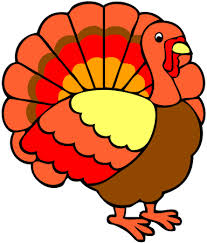Everybody likes attention. Children particularly enjoy the attention of adults, and they often want undivided when it is least possible to receive it. The adult needs to have appropriate expectations, set reasonable limits, and problem-solve in creative ways when there is more than one child to care for.
The goal is to find activities that both children can enjoy together. When they are of different ages and abilities, their attention span and understanding of the game or project may be different as well, but still the tasks can be adjusted to suit different children. For example, if two children are involved in cooking, one may be able to carefully measure ingredients, and the other child can be in charge of pouring the ingredients into the bowl. If an older child is carefully working on a coloring project, give a younger child his own sheet of paper and crayons, making it clear that everyone is working on their own. Keep the tasks age-appropriate, and save the ‘grown up’ activities involving small pieces or sustained concentration for the younger child’s nap time.
It is important to remember that children of different ages will play with the same toys in different ways, depending on their age and ability. The adult may need to work to keep the younger child engaged with the activity longer, so as not to interfere with the older child’s efforts. For example, they could both play with blocks, but it may take adult intervention to keep a younger child from disturbing what the older child has built. The older child may be interested in creating an elaborate building or a city with cars, people or animals. Perhaps the younger child can play with it after it is built.
When playing a game with two children of different abilities, it may be necessary to change the rules to accommodate everybody. Try enlisting the understanding of the older child; remind her that she wasn’t always able to do all the things she does now. An older child can take pleasure in helping a younger brother or sister learn new skills. Have the children take turns playing “follow the leader” or “hide and seek.” Games of imagination work well, with the children taking different roles, or a scavenger hunt, with the adult giving necessary assistance to the younger child.
An older child may not always like this attention-sharing. You can give him the choice of doing the activity with you and the younger child in the way you have described, or to play by himself. Try planning ahead for the younger child’s nap time and arrange to do a special activity with the older child then, but don’t be disappointed if the older child turns you down. Children sometimes only want attention when they can’t have it.
The adult must be sure that each child does get appropriate attention, and that one child is not always being sacrificed for the other. It is easy to give a baby more attention, but babies can learn at an early age to watch and participate with others too. It may even be possible to hold a younger child on your lap while you do more grown up things with the older child. Babies can also be left to play by themselves in a playpen or a crib for short periods of time to enable the older child to have some one-on-one attention.
Remember that whatever the activity, you must be able to see both (or all) the children to be sure they are safe.
Thanks to Etta Rosen for this article.


 Many children in our cluster have already started school and the rest will start it shortly. To ease the transition, it’s important for host parents and au pairs to discuss changes in schedules, duties, and routines.
Many children in our cluster have already started school and the rest will start it shortly. To ease the transition, it’s important for host parents and au pairs to discuss changes in schedules, duties, and routines.
 Is your au pair a superstar? Let us know!
Is your au pair a superstar? Let us know! THANKSGIVING falls on the fourth Thursday of November. It is as a legal holiday in the United States and commemorates the feast held at Plymouth in 1621 by the Pilgrim colonists and members of the Wampanoag people. The feast was held to honor God and give him thanks for harvest and health.
THANKSGIVING falls on the fourth Thursday of November. It is as a legal holiday in the United States and commemorates the feast held at Plymouth in 1621 by the Pilgrim colonists and members of the Wampanoag people. The feast was held to honor God and give him thanks for harvest and health.